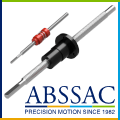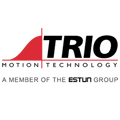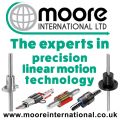
Posted to News on 25th Jan 2020, 00:00
Project management to ensure machines comply
If you are the project manager that is responsible for machinery building and safety, it’s vital that you have an understanding of how Brexit will impact your role. The good news is that after Brexit, the actual process for manufacturing compliant products will have little effect from a legal perspective as the UK will operate a regulatory regime that is separate from the EU – just like the rest of the world.

As the EU Directives are transposed into National Law, the UK already has a legal system in place that applies. There will of course be text amendments to reflect UK legislative requirements, including the UKCA mark and removal of references to EU directives and the CE marking. While references to ‘harmonised standards’ will change to ‘designated standards’, the actual standards will remain the same as EU harmonised standards, and will be carried across as UK designated standards to maintain a single model, and all products will still need to comply with the essential requirements. However, while the UK remains in the EU, the new UKCA mark for the UK cannot be applied.
Under the current proposal for the UKCA mark, existing UK-based notified bodies will become UK Approved Bodies. So, their actual function will remain the same but under a different title. Meanwhile, all relevant certificates that have already been issued for EU Directives before Brexit, such as Radio Equipment, Machinery and Marine Equipment, will remain valid beyond Brexit.
Project management practicalities
When the Provision and Use of Work Equipment Regulations (PUWER) first came into force in 1992 it included a very simplistic view on CE marking as the end user only had to check that the equipment concerned carried a CE Mark. If it did, they were able to presume conformity. PUWER was updated in 1998 and one of the more important but easily overlooked changes was that the onus was now put on the end-user to make sure that the equipment complies with all relevant legislation such as CE marking. These changes were re-enforced with further changes in June 2002.
When building machines, or when combining machines to produce an assembly of machines, it is easy to get things wrong and end up with a project that requires a lot of rework and ends up going over budget or overtime. To this end, it is vital to ensure that the CE/UKCA marking is considered from the start. If this isn’t done, common problems that occur include:
- Equipment being installed before a final layout is agreed so that machines have to be moved and rework is required.
- Consideration not given to a safety related control system at the start leads to a number of problems when linking different machines with different performance levels.
- Not considering control system functionality so that feed conveyors are not stopped when a process is stopped, resulting in damaged products at best and injury at worst.
- Machinery that is not inspected before installation subsequently reveal non-compliances, resulting in disagreements about who pays to put it right - the supplier, the contractor or the user.
- Control colours not being agreed means that different suppliers may use different colours, leading to confusion. The European Standard allows for green, white, black or grey for ‘start’ and red, white, black or grey for ‘stop’, so even if the supply chain complies with the standard, errors and confusion can occur.
Equipment is often designed and installed with no thought as to what happens either upstream or downstream, or who takes the responsibility for which parts, and who takes responsibility for the final assembly. This can be exacerbated when equipment is sourced from outside the European Economic Area, or existing equipment is linked to new equipment.
When starting a project, it is therefore vital to decide who is going to take the responsibility for the CE/UKCA marking and lay down the ground rules. Decide what Performance Level the machine will come under, using EN ISO 13849 and ensure all suppliers are aware of what is required. Make sure they all understand which EN Standards to follow, and that they have copies of the Standards. A good tip is to ask for sample declarations before deciding on suppliers, so that you can check to see if they contain the correct information.
When you issue purchase orders, ensure there is a clause about CE/UKCA marking which states whose responsibility it is. A solution to this is to use a User Requirement Specification (URS) when purchasing new equipment, which will outline your requirements for the equipment supplier. A URS should include statements such as:
- The machine must comply with all applicable European and UK legislation (list all applicable directives)
- Euro-norm standards should be used to achieve compliance with the essential safety requirements of all applicable directives
- Documentary evidence demonstrating compliance with all applicable directives will be required
- A Declaration of Conformity will be required
- A CE/UKCA marking will be applied to the machine, preferably on the maker’s nameplate
- A full operation and maintenance manual that complies with EHSR 1.7.4 of the Machinery Directive will be required
Before accepting and paying for any machines, check that they meet the requirements of the order and also that they conform to the Machinery Directive. A pre-purchase audit is a useful system that can help machinery buyers ensure that equipment is both safe and correct.
















